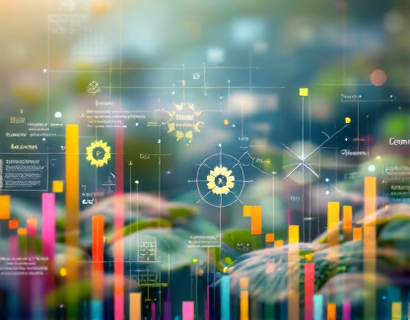Data-Driven Insights for Sustainable Horticulture and Farming: Transforming Resource Management with Advanced Analytics
Introduction to Sustainable Horticulture and Farming
In recent years, the global focus on sustainability has shifted agricultural practices towards more eco-friendly and resource-efficient methods. Sustainable horticulture and farming aim to meet the growing demand for food while minimizing environmental impact. This transformation is crucial for ensuring food security and preserving natural resources for future generations. Advanced analytics plays a pivotal role in this shift by providing data-driven insights that optimize resource management and enhance crop yields.
Understanding the Role of Advanced Analytics
Advanced analytics leverages big data, machine learning, and artificial intelligence to process vast amounts of agricultural data. This technology enables farmers and horticulturists to make informed decisions based on real-time and historical data. By analyzing soil conditions, weather patterns, crop health, and market trends, advanced analytics helps in creating a more efficient and sustainable farming system.
Optimizing Resource Use
One of the primary benefits of advanced analytics in agriculture is the optimization of resource use. Precision agriculture, a key application of these technologies, allows for the precise application of water, fertilizers, and pesticides. This precision reduces waste and minimizes environmental pollution. For instance, soil moisture sensors and drones equipped with multispectral cameras can monitor soil conditions and plant health, enabling farmers to apply water and nutrients only where needed. This targeted approach not only conserves resources but also reduces costs for farmers.
Enhancing Crop Yields
Advanced analytics also contributes to increasing crop yields. By analyzing historical data and current conditions, farmers can identify the best planting times, crop varieties, and management practices. Machine learning algorithms can predict crop yields with high accuracy, helping farmers plan for harvests and market demands. Additionally, predictive analytics can identify potential pest and disease outbreaks, allowing for timely interventions that protect crops and maintain high yields.
Promoting Eco-Friendly Practices
Sustainable horticulture and farming are not just about efficiency; they are also about environmental stewardship. Advanced analytics supports eco-friendly practices by providing insights that reduce the ecological footprint of agricultural activities. For example, by optimizing fertilizer use, farmers can prevent nutrient runoff into water bodies, reducing water pollution. Similarly, precise irrigation techniques minimize water usage, conserving this vital resource.
Soil Health Management
Soil health is fundamental to sustainable agriculture. Advanced analytics can monitor soil conditions in real-time, providing data on nutrient levels, pH, and moisture content. This information helps farmers adopt practices that enhance soil fertility and structure, such as cover cropping and reduced tillage. By maintaining healthy soil, farmers can improve crop resilience and reduce the need for chemical inputs, further promoting sustainability.
Biodiversity Conservation
Biodiversity is essential for ecosystem health and agricultural resilience. Advanced analytics can help in designing farming systems that support biodiversity. For instance, by analyzing the impact of different crop rotations and intercropping practices, farmers can create habitats that support beneficial insects and other wildlife. This approach not only enhances biodiversity but also improves pest control and pollination, leading to better crop yields.
Case Studies and Real-World Applications
Several case studies demonstrate the successful integration of advanced analytics in sustainable horticulture and farming. One notable example is a large-scale vegetable farm that implemented precision agriculture techniques. By using soil moisture sensors and weather data, the farm reduced water usage by 30% and increased crop yields by 15%. Another example is a fruit orchard that utilized drone technology to monitor tree health and detect early signs of disease. This proactive approach led to a 20% reduction in pesticide use and a significant increase in fruit quality.
Challenges and Solutions
Despite the numerous benefits, the adoption of advanced analytics in agriculture faces several challenges. High initial costs, technical complexity, and a lack of skilled personnel are common barriers. To overcome these challenges, governments and private organizations can provide financial incentives and training programs. Additionally, developing user-friendly software and integrating it with existing farming systems can make advanced analytics more accessible to a broader range of farmers.
Future Trends in Agricultural Analytics
The future of agricultural analytics is promising, with ongoing advancements expected to further enhance sustainability and productivity. One emerging trend is the integration of Internet of Things (IoT) devices, which can provide continuous and real-time data on various farm parameters. Blockchain technology is another area of interest, offering transparent and secure data sharing among stakeholders. As these technologies mature, they will likely become integral to sustainable farming practices.
Conclusion
Advanced analytics is revolutionizing sustainable horticulture and farming by optimizing resource management, enhancing crop yields, and promoting eco-friendly practices. By leveraging data-driven insights, farmers and horticulturists can make informed decisions that lead to improved productivity and environmental stewardship. As the agricultural sector continues to evolve, the role of advanced analytics will become increasingly vital in achieving a sustainable and resilient food system for the future.



